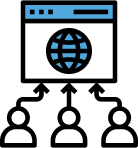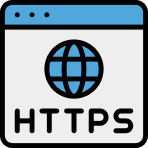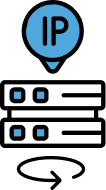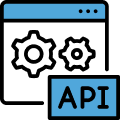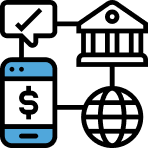Last Updated on June 18, 2025 by ceo_agency
Web scraping is an essential tool for data-driven businesses. Whether you’re monitoring competitor prices, gathering product details, or analyzing content trends, continuous access to websites without restrictions is vital. However, performing large volumes of automated requests from a single IP quickly raises red flags. That’s where a trusted proxy for scraping comes in—offering the anonymity, stability, and distribution needed for smooth, efficient data extraction.
Why Use a Proxy Server for Scraping?

Most modern websites deploy anti-bot systems to detect repetitive requests. Without rotating IPs, scrapers are likely to hit captchas, throttling, or outright IP bans. A scraping proxy server routes requests through multiple IP addresses, simulating traffic from different users and regions. This allows scrapers to remain undetected and maintain uninterrupted access.
With the right scraping proxy online, you can:
- Crawl target websites without rate limitations
- Avoid IP bans, temporary suspensions, and challenge pages
- Scale your scraping operations across multiple threads
- Collect clean and geo-neutral data from any public resource
Using proxies for scraping isn’t just about speed—it’s about maintaining reliability and data accuracy over time.
Types of Proxies for Scraping
Choosing the right proxy type is essential for success, depending on your data source, request frequency, and sensitivity of the target.
- Mobile proxies – Offer the highest level of trust. Great for scraping websites with strict detection systems. These rotate through carrier networks, appearing as real user traffic.
- Residential proxies – These use IPs from real households. They’re harder to detect and block, making them ideal for tasks like price monitoring or localized content collection.
- Datacenter proxies – Provide fast and cost-effective IPs. Best suited for scraping less protected sites or for high-volume internal testing.
If your scraping targets include search platforms or sensitive data sources, pairing with a proxy for search engines can also improve accuracy and reduce blocking issues.
How to Choose the Best Scraping Proxy Server
Not all proxy servers for scraping are built the same. Here’s what to look for:

- IP quality – Avoid reused or blacklisted IPs. Ensure your provider offers fresh, clean addresses.
- Session control – Some tasks need sticky sessions; others benefit from rotating IPs. Choose based on your spider’s structure.
- Speed and uptime – Latency affects your crawl speed. High uptime ensures uninterrupted jobs.
- Flexibility and scaling – As your data needs grow, consider if your provider offers an adaptable scraping proxy plan or flexible pricing model.
For certain tasks, you might also need long-session capability. In that case, combining proxies with tunneling tools or configurations like private proxy access with encryption can add extra security.
Best Practices for Using Scraping Proxy Online
To get maximum value from your scraping proxy online, follow these proven methods:
- Rotate IPs intelligently – Change addresses based on request volume or per target domain.
- Throttle requests – Mimic human-like behavior to avoid triggering security systems.
- Use varied headers – Randomize user-agent strings and HTTP headers.
- Monitor success rates – Track your scraper’s performance to detect drops in response quality or proxy issues.
The same principles apply across other tasks like proxy for marketing research, where clean data collection is just as critical.
LTESocks: A Trusted Source of Scraping Proxies
LTESocks provides premium proxies for scraping with a focus on stability, IP reputation, and customizable session behavior. Our mobile and residential proxy pools are designed for high-throughput environments and integrate seamlessly with major scraping frameworks like Scrapy, Puppeteer, and Selenium.
Customers also rely on LTESocks for specialized cases like proxy for programs and software that run scheduled data retrieval or automated content analysis.
Each plan is built to scale—from small projects to enterprise data operations. And with a wide selection of mobile proxy packages, you can adjust usage based on your volume and frequency needs.




